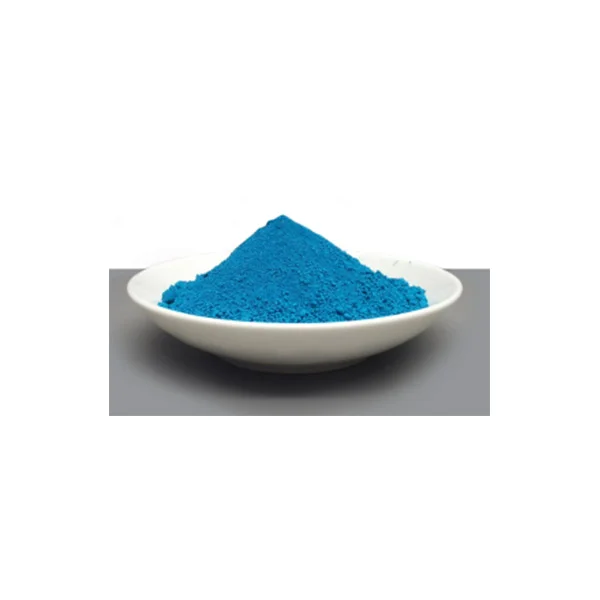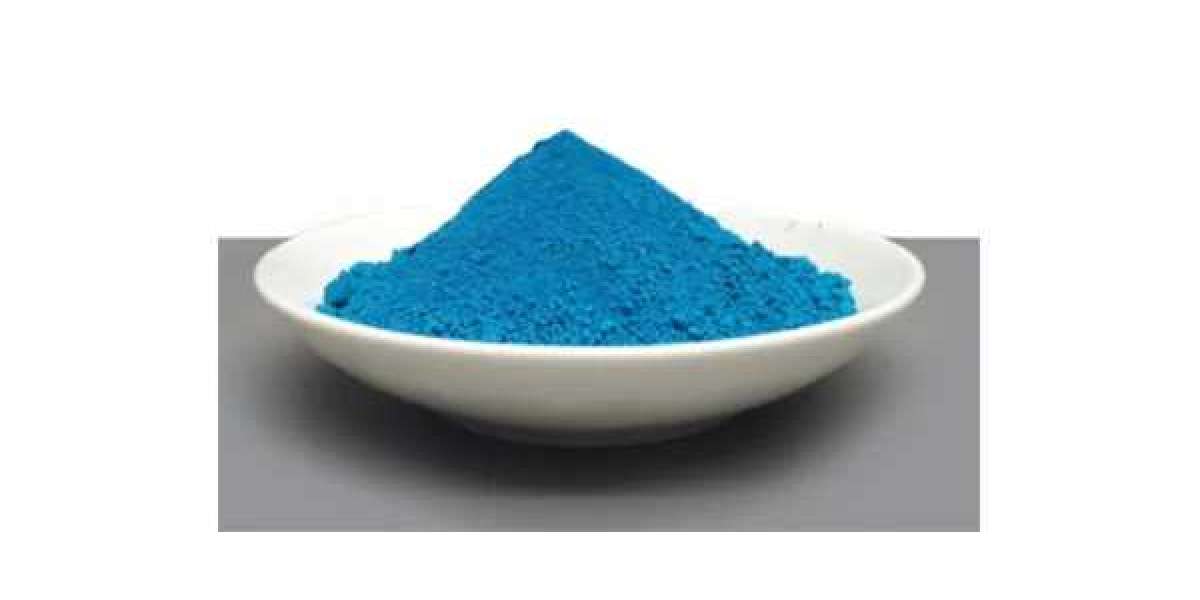In the quest for a sustainable future, the global shift towards environmentally friendly materials has become imperative. Among the myriad of innovations, environmentally friendly cobalt blue pigments have emerged as a beacon of hope, offering vibrant colors while minimizing ecological footprints. These pigments, distinguished by their durability and chemical stability, are not only crucial for aesthetic enhancement but also play a pivotal role in various industries committed to green practices.

1. Art and Decoration: Bringing Nature's Hue to Every Corner
1.1 Paintings and Artworks
In the art world, cobalt blue has long been cherished for its intense, yet soft, hue that adds depth and richness to paintings. Eco-friendly cobalt blue pigments, derived from sustainable sources and processed with minimal environmental impact, are now favored by artists seeking to blend creativity with responsibility. These pigments maintain the traditional aesthetic appeal while reducing harmful emissions during production and disposal, aligning with the growing trend of eco-art.
1.2 Interior and Exterior Coatings
The decorative industry has also embraced eco-conscious cobalt blue pigments. Used in paints for both interior and exterior walls, these pigments contribute to vibrant, long-lasting colors that resist fading over time. Their non-toxic nature ensures safer living environments, particularly important in homes with children and pets. Additionally, their capacity to reflect sunlight can help regulate indoor temperatures, reducing energy consumption for heating and cooling.
2. Ceramics and Glassware: Preserving Heritage with a Twist
2.1 Traditional Ceramic Practices
Cobalt blue pigments have a rich history in ceramic art, traditionally used to decorate porcelain and other ceramic wares. Modern, environmentally friendly versions of these pigments continue this tradition without compromising the environment. By utilizing recycled materials and sustainable production methods, ceramic artists and manufacturers can now offer beautiful, eco-friendly products that resonate with consumers' growing concern for sustainability.
2.2 Innovative Glass Applications
In the glass industry, cobalt blue pigments add a striking aesthetic to stained glass windows, glassware, and decorative objects. Eco-friendly formulations ensure that the production of these vibrant glasses does not contribute to pollution or resource depletion. These pigments also offer enhanced UV resistance, preserving the clarity and color vibrancy of glass products over extended periods.
3. Plastics and Textiles: Colorful Sustainability
3.1 Eco-Plastic Solutions
The plastics industry, often criticized for its environmental impact, is increasingly incorporating eco-friendly cobalt blue pigments. These pigments not only enhance the visual appeal of plastic products but also promote circularity by being compatible with recycling processes. Their use in biodegradable plastics further reduces the burden on landfills, fostering a more sustainable plastics economy.
3.2 Sustainable Textile Dyeing
The textile industry, another major consumer of pigments, is under pressure to adopt greener practices. Eco-friendly cobalt blue pigments offer a sustainable alternative to traditional dyes, reducing water consumption and waste generation during dyeing processes. These pigments are also designed to be non-toxic and hypoallergenic, making them ideal for sensitive skin and promoting healthier fashion choices.
4. Automotive and Industrial Coatings: A Bold Step Forward
4.1 High-Performance Coatings
In the automotive sector, eco-friendly cobalt blue pigments are pivotal in creating visually striking, yet durable, exterior finishes. These pigments are formulated to withstand extreme weather conditions and maintain their vibrant color, enhancing the overall appeal and resale value of vehicles. Their use also aligns with automotive manufacturers' commitments to reducing environmental footprints throughout the supply chain.
4.2 Industrial Applications: Safety and Aesthetics
Beyond aesthetics, eco-friendly cobalt blue pigments play a crucial role in industrial coatings, particularly in sectors like aviation, marine, and construction. These pigments are used in high-visibility markings and safety signs, ensuring better visibility and enhancing workplace safety. Their resistance to corrosion and UV degradation makes them ideal for protective coatings in harsh environments, contributing to the longevity of industrial assets.
Conclusion
The diversified applications of D-Ray Technology environmentally friendly cobalt blue pigments demonstrate their versatility and significance in fostering a sustainable future. From art and decoration to automotive and industrial coatings, these pigments not only enrich our visual landscape but also contribute to reducing environmental harm. As consumers and industries continue to embrace eco-conscious practices, the demand for such pigments will undoubtedly grow, paving the way for more sustainable innovations and a greener life for all.







